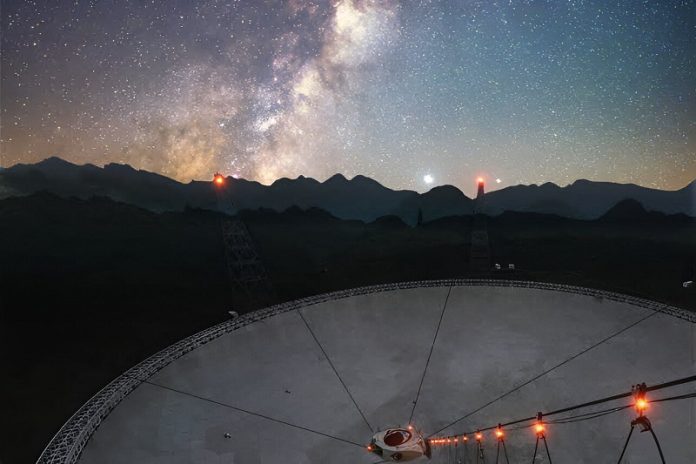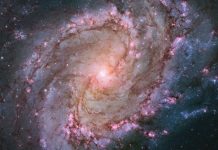
Fast Radio Bursts (FRBs) are a bit like cosmic fireworks.
They are sudden, intense explosions of electromagnetic radiation from deep space, lasting just milliseconds.
Astronomers discovered them over 15 years ago, and ever since, they’ve been trying to understand more about where they come from and why they happen.
Most of the FRBs we’ve spotted so far have come from far outside our own Milky Way galaxy. But in April 2020, scientists found the first one from within our galaxy.
It was named FRB 20200428, and it came from a type of neutron star called a magnetar (SGR J1935+2154), which is about the size of a city and has an incredibly strong magnetic field.
This find made scientists wonder if other FRBs from distant galaxies might also be coming from magnetars.
But there’s a problem: magnetars usually spin, and this spinning should show up in the FRBs they produce. So far, though, astronomers haven’t been able to detect this spinning.
Recently, an international team of researchers, including astrophysicist Bing Zhang from the University of Nevada, Las Vegas, have been keeping a close eye on the magnetar SGR J1935+2154.
They discovered another space oddity, a radio pulsar phase, about five months after the April 2020 FRB. This new discovery might give us some important clues.
The team used one of the world’s most powerful radio telescopes, the Five-hundred-meter Aperture Spherical radio Telescope (FAST) in China, to follow the magnetar.
They found that the FRB and the later pulsar phase came from different areas within the magnetar. This suggests that the two phenomena might have different causes.
According to Weiwei Zhu, the study’s lead author from the National Astronomical Observatory of China, FAST picked up 795 pulses from the magnetar over 13 days.
These pulses seemed different from the ones usually observed from the source, which adds another piece to the puzzle.
Just like FRBs, radio pulses are electromagnetic explosions, but they’re about a million billion times less bright. Usually, they come from rotating neutron stars called pulsars, not magnetars. But sometimes, like with SGR J1935+2154, magnetars can also produce these pulses.
Another important difference between bursts and pulses is when they’re emitted. According to Zhang, the pulses from magnetars only happen during a short time window within each period of emission.
This is known as the ‘lighthouse’ effect. The April 2020 FRB and several other bursts, however, happened randomly, not within the pulse window.
Zhang explained that this strongly suggests pulses and bursts come from different parts of the magnetar, which could mean they’re caused by different mechanisms.
This close study of a magnetar within our own galaxy could help us understand more about the mysterious FRBs we see from far-off galaxies. Some of these distant FRBs have been observed to repeat, but so far, scientists haven’t been able to find a pattern to these repeats.
Zhang suggests that this might be because the bursts from a magnetar seem to be sent out in all directions, which makes it impossible to spot any patterns. This discovery casts doubt on the idea that repeating FRBs are caused by magnetars.
The study was published in the journal Science Advances.
Follow us on Twitter for more articles about this topic.
Source: University of Nevada, Las Vegas.



